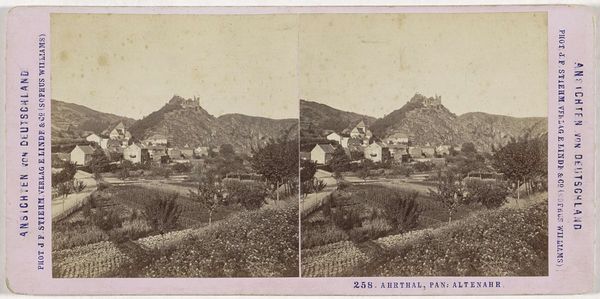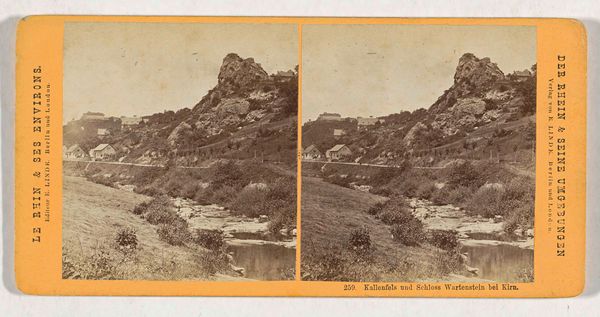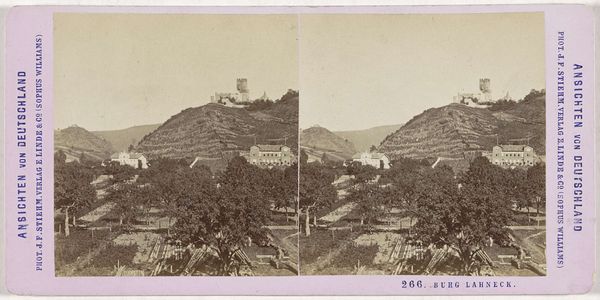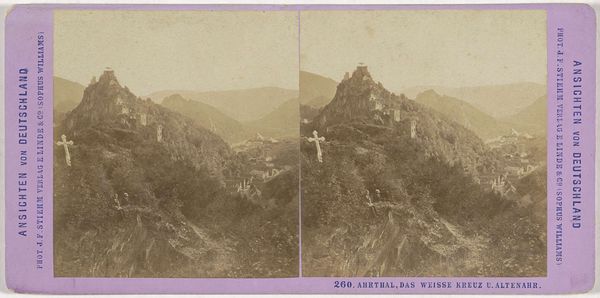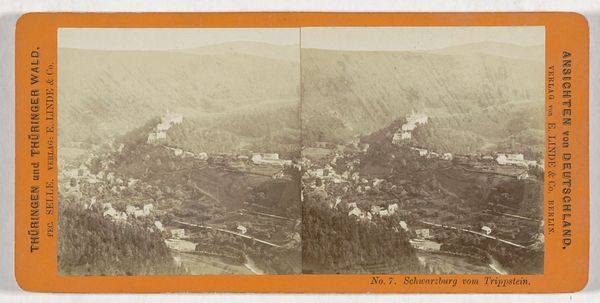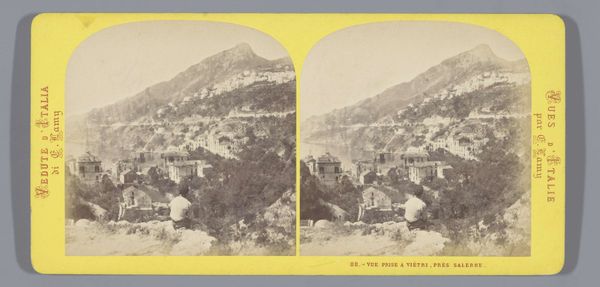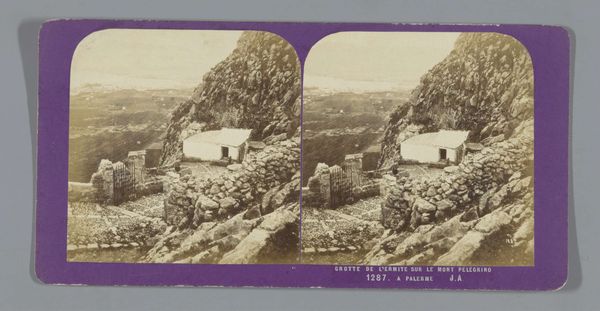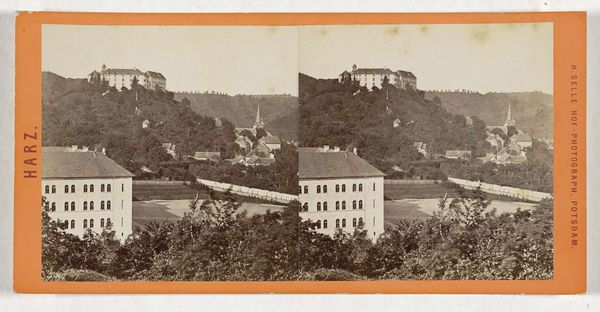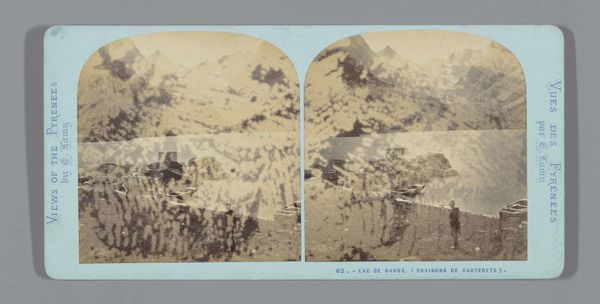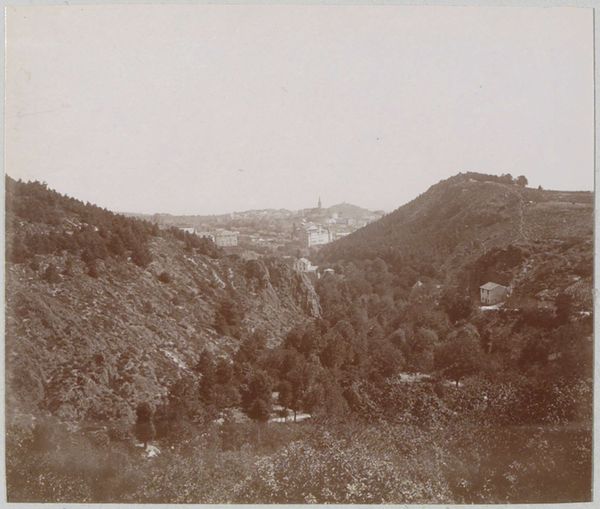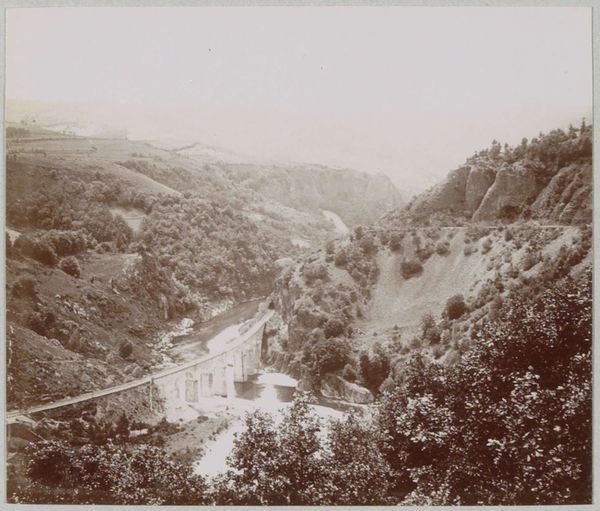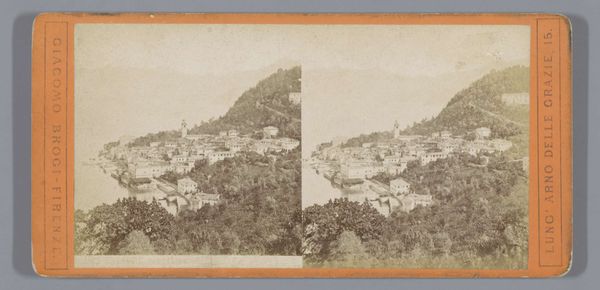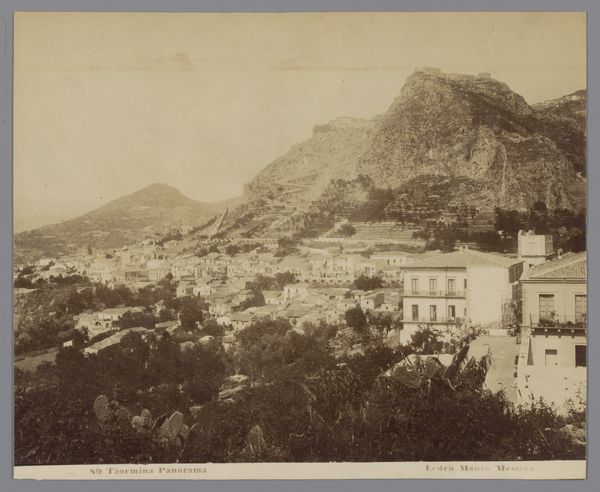
Gezicht op Altenahr met hotel Winkler en de ruïne van Burg Are, Duitsland 1869 - 1872
0:00
0:00
Dimensions: height 86 mm, width 175 mm
Copyright: Rijks Museum: Open Domain
Curator: This stereo card, a photograph titled "View of Altenahr with the Hotel Winkler and the ruins of Burg Are, Germany," was captured by Johann Friedrich Stiehm between 1869 and 1872. It provides a glimpse into the romantic German landscape. Editor: It's evocative, almost dreamlike in its composition. The pale sepia tones and the stark contrast create a scene that feels both real and strangely distant, doesn't it? Curator: Absolutely. This image operates within a larger visual culture that celebrated German identity and landscape. Photography during this era was instrumental in constructing notions of national pride, aligning with both the Realist and Romantic movements in art. The carefully chosen vantage point, the hotel situated below a ruined castle, speaks to specific class experiences. Editor: I’m intrigued by that juxtaposition of leisure and ruin. Is it glorifying tourism, while perhaps unconsciously revealing the social dynamics? Those enjoying the hotel are positioned in direct contrast to the castle ruins; their social standing has replaced former residents. What about those figures strolling along the road in the foreground, almost anonymous within this carefully constructed scene? Curator: Precisely. These photographic views, often produced in series and widely circulated, shaped perceptions of places like Altenahr. Think about the infrastructure of tourism being established and catered to elite groups. Hotels became social markers, part of the experience. The ruin itself is picturesque—signifying history but controlled. Editor: It also raises the question: whose history is being valued and who has the privilege to enjoy that history? Curator: Definitely a pointed consideration. This stereo card isn't merely a neutral document; it’s an object embedded in layers of social and economic contexts. By considering who made it, for whom, and why, we get to see a past shaped and framed for very specific consumption. Editor: It goes beyond simple nostalgia; the framing and the content reveal more than a picture postcard. This photo becomes an important reminder about the complexities of historical interpretation. Curator: I agree; this "View of Altenahr" invites us to delve deeper into the socio-political context that gave it shape. Editor: For me, reflecting on what this image is doing rather than only seeing what is on the surface, it opens avenues for dialogue and invites critique about landscape, access, and how we narrate the past.
Comments
No comments
Be the first to comment and join the conversation on the ultimate creative platform.
